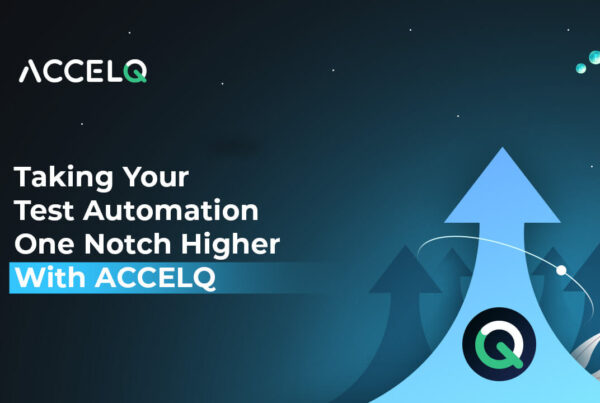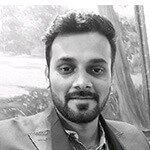Maximizing ROI for Test Automation: A Comprehensive Guide

The popularity of Agile, DevOps, and AI-powered processes has transformed the software industry, leading the test automation market in new directions. Market forecasts suggest that global automation testing will grow from $17.71 billion in 2024 to $69.85 billion in 2032. This
accelerated growth highlights that return on investment (ROI) should be calculated and optimized for test automation initiatives. This in-depth guide examines the most important elements that affect ROI, how to calculate them correctly, and how to increase returns.
Key Drivers of Test Automation ROI
Several critical factors impact the ROI for test automation. Businesses need to evaluate these elements to ensure they are optimizing their investment:
- 1. Initial Investment Costs: Licensing, installation, and training costs are fundamental considerations. These expenses lay the groundwork for effective automation but must be carefully planned to avoid budget overruns. Businesses should assess whether the tools selected align with their testing needs and future scalability.
- 2. Accelerated Testing Cycles: It automatically takes time for repetitive tasks that lead to faster identification and fixation of bugs. As a result, enabling faster product delivery and shorter time-to-market. As an example, automated regression testing can be carried out overnight, while manual testing could span several days.
- 3. Workforce Optimization: This not only saves time and resources but also allows teams to focus on complex and value-rich activities such as exploratory testing or developing new features. This not only fishes out the plan to maintain new accolades but also makes the employees happy by eliminating lame work ratios.
- 4. Comprehensive Test Coverage: Automation supports robust testing across various environments, platforms, and configurations, ensuring high-quality software and early defect detection. For instance, cross-browser testing and mobile compatibility checks can be executed simultaneously with automation.
- 5.Improved Accuracy: Unlike manual testing, automation eliminates human errors, enhancing accuracy and delivering consistent results. This is particularly valuable in scenarios where tests are repeated frequently, such as load or performance testing.
Measuring ROI for Test Automation:
Understanding and calculating automation ROI is crucial for justifying automation investments. Here are key metrics and formulas to use:
| Metric | Description |
|---|---|
| Tool Costs | Licensing, implementation, and training expenses. |
| Ongoing Maintenance | Costs associated with tool updates, debugging, and support. |
| Infrastructure Expenses | Hardware, cloud platforms, and additional plugins. |
| Time Savings | Hours saved due to automation compared to manual testing. |
| Labor Cost Reduction | Reduced dependency on manual testing labor. |
| Faster Releases | Accelerated cycles leading to reduced time-to-market. |
Test Automation ROI Calculator
The formula for calculating ROI is straightforward:
ROI = (Total Measurable Benefits / Costs) × 100
Example Calculation
Consider a company investing $50,000 in automation tools. The measurable benefits include:
- Time savings: $30,000
- Labor Reduction: $20,000
- Faster Development: $50,000
- Total Benefits = $30,000 + $20,000 + $50,000 = $100,000
ROI = ( 100,000 / 50,000 ) × 100 = 200%
For every $1 invested, the company gains $2 in benefits.
Efficiency Metrics for Automation ROI Performance
To evaluate the effectiveness of your test automation efforts, consider the following metrics:
Development Time for Automated Scripts
- Formula: (Time spent per script × Total scripts) / 8
- This measures the efficiency of script creation and scalability. For instance, reusable scripts can significantly reduce future development time.
Execution Efficiency
- Formula: (Execution time × Total test cases × Duration in weeks) / 18
- Continuous execution capability is a hallmark of automation. Automated suites can execute thousands of test cases overnight, enabling faster iterations.
Analysis and Reporting
- Formula: (Analysis time per test × Duration in weeks) / 8
- Automation accelerates reporting, reducing time spent on test result analysis. Dashboards in modern tools like ACCELQ provide real-time insights, streamlining this process.
Maintenance Effort
- Formula: (Weekly maintenance time × Duration in weeks) / 8
- This metric highlights long-term sustainability and cost-efficiency. Proactive script maintenance ensures reliability and reduces unexpected downtimes.
Proven Strategies to Maximize Automation ROI
Define Clear Objectives
Align automation goals with overarching business objectives, ensuring they contribute to improved efficiency and product quality. For example, a goal to reduce bug leakage by 20% can directly enhance customer satisfaction.
Tool Selection Matters
Choose scalable, flexible, and easy-to-integrate tools. Platforms like ACCELQ offer advanced AI-driven capabilities for seamless automation. Ensure the chosen tools support cross-platform compatibility and integrate with existing CI/CD pipelines.
Start Small, Scale Gradually
Implement automation in pilot projects to identify challenges and refine strategies before organization-wide adoption. A phased approach minimizes risks and helps build confidence among stakeholders.
Regularly Monitor Metrics
Continuously track and adjust performance indicators to optimize ROI for test automation over time. Metrics like defect detection efficiency and test case execution rates provide actionable insights for improvement.
Harness Intangible Benefits
While some benefits are quantifiable, others offer significant value:
| Intangible Benefit | Impact |
|---|---|
| Enhanced Employee Morale | Eliminates repetitive tasks, fostering creativity and engagement. |
| Superior Customer Experience | Bug-free software ensures higher satisfaction and loyalty. |
| Market Agility | Faster releases enable businesses to adapt quickly to changing market conditions. |
Emerging Trends Enhancing Automation ROI
AI-Powered Automation
Artificial intelligence is transforming test automation through self-healing scripts, predictive analytics, and smarter test coverage. For instance, it can flag the high-risk areas of code so they are tested before less critical areas.
Codeless Testing Platforms
Codeless platforms simplify testing for non-technical users, reducing dependency on specialized skill sets and cutting training costs. These tools empower broader teams to contribute to testing.
Shift-Left Testing Strategies
The earlier defects are detected through testing (during the software development lifecycle), the fewer bugs that get to the production environment. This fits into DevOps’s working method and promotes collaboration between developers and testers.
Leveraging Case Studies to Demonstrate ROI
Real-world success stories can help illustrate the potential of test automation ROI. For example:
- E-commerce Platform: Reduced regression testing time by 80%, enabling faster feature rollouts and increasing revenue by 15%.
- Healthcare Application: Achieved 95% defect detection efficiency, ensuring compliance with stringent industry standards.
- Telecom Company: Improved test coverage by 70% through automation, leading to a significant reduction in customer-reported issues.
Conclusion
Maximizing ROI in test automation is a strategic necessity for businesses aiming to stay competitive. By calculating ROI accurately and adopting best practices, organizations can unlock substantial benefits. Tools like ACCELQ offer up to 7.5x productivity gains and 72% cost savings. Ready to revolutionize your testing strategy? Book an ACCELQ demo today and experience the future of test automation.
Balbodh Jha
Associate Director Product Engineering
Balbodh is a passionate enthusiast of Test Automation, constantly seeking opportunities to tackle real-world challenges in this field. He possesses an insatiable curiosity for engaging in discussions on testing-related topics and crafting solutions to address them. He has a wealth of experience in establishing Test Centers of Excellence (TCoE) for a diverse range of clients he has collaborated with.
You Might Also Like:
 Build a High-Impact Automation Team
Build a High-Impact Automation Team
Build a High-Impact Automation Team
 Test Automation Accelerators: Myths You Shouldn’t Believe
Test Automation Accelerators: Myths You Shouldn’t Believe
Test Automation Accelerators: Myths You Shouldn’t Believe
 Take Your Test Automation Higher
Take Your Test Automation Higher
































